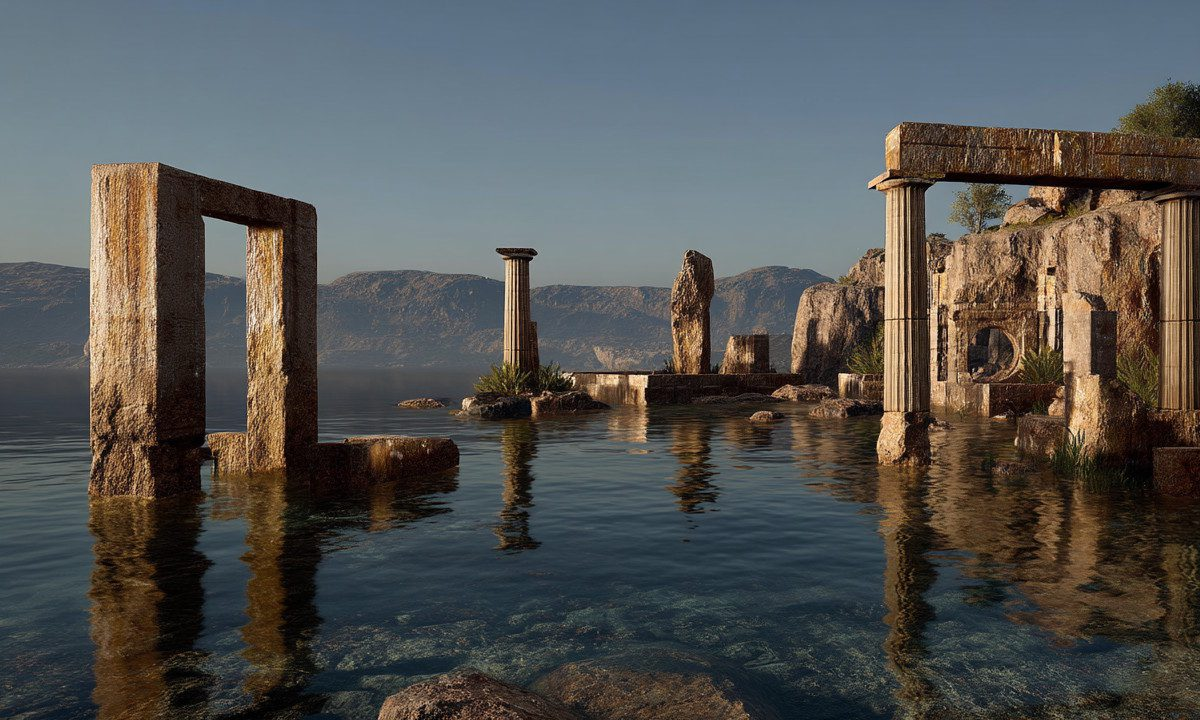In ancient times, the sea level was significantly lower. Today, some of the bustling ports of ancient Greece lie submerged beneath the waves. These once-thriving coastal hubs—centers of trade, life, and naval power—have been consumed by the sea, leaving behind only traces of their existence. Let’s explore the cities that have been literally swallowed by the water.
The image of a port as a place of life, commerce, connection, and shelter is deeply ingrained in Greece’s historical identity. Yet many ports that once hosted triremes, merchants, and generals now rest underwater, either submerged or vanished entirely—silent casualties of a changing seascape. These aren’t myths, but real places that highlight how dramatically landscapes can shift over the millennia.
During the Late Bronze Age, around 1200 BCE, sea levels were generally 1 to 2 meters lower than today. This means ancient ports were often located farther inland than one would expect now. Some now sit completely underwater, a testament to how time and nature have redrawn coastlines.
In the Argolid region, the ancient city of Asine once had a port that is now beneath the sea. Mycenaean structures in the area are still visible to divers—stone walls and roads lying quietly underwater. Here, the sea didn’t destroy history; it covered it, preserving fragments of the past beneath its surface.
On the island of Samos, the area around the Heraion (Sanctuary of Hera) was once protected by an artificial breakwater from the Archaic period, now submerged. Archaeological findings show the port was active in the 6th century BCE, while the current shoreline lies well inland compared to its ancient position.
In Piraeus, the ancient military harbors of Zea, Mounichia, and Kantharos have shifted significantly in relation to today’s coastline. Excavations and research have revealed highly advanced shipbuilding facilities for their time, complete with dry docks and warehouses—many now buried under modern constructions or lying underwater.
In Antikyra, Boeotia, the ancient harbor now lies several meters out to sea. Where ships once moored, only submerged lines of stone walls and foundations remain, visible only from the air or on especially clear days.
Off the western coast of Crete, in the Gulf of Kissamos, diving expeditions have uncovered submerged roads and building foundations, evidence that the shoreline of the Roman-era city was displaced due to seismic activity and gradual sea-level rise.
These changes aren’t due to rising seas alone. Earthquakes and land subsidence often played a role, triggering sudden and dramatic shifts in terrain. One striking example lies outside Greece but within the Hellenic world—Alexandria, Egypt. Large portions of this ancient Greek-founded city are now underwater, a powerful reminder of nature’s ability to reshape human settlements.
Back in the Argolid, the port of Epidaurus Limera also succumbed gradually to the rising sea. Once a bustling harbor, its facilities now form a popular diving site, where submerged ruins offer a glimpse into the past.
Ancient climate shifts, seismic events, and the complex geology of the Mediterranean have transformed Greece’s coastal landscapes. Where we now see sea, there may once have been a market, a temple, or a pier. Greece, renowned for its castles and sculptures on land, also hides a submerged world—an underwater history waiting to resurface, if only in the imagination of those who uncover its story.







